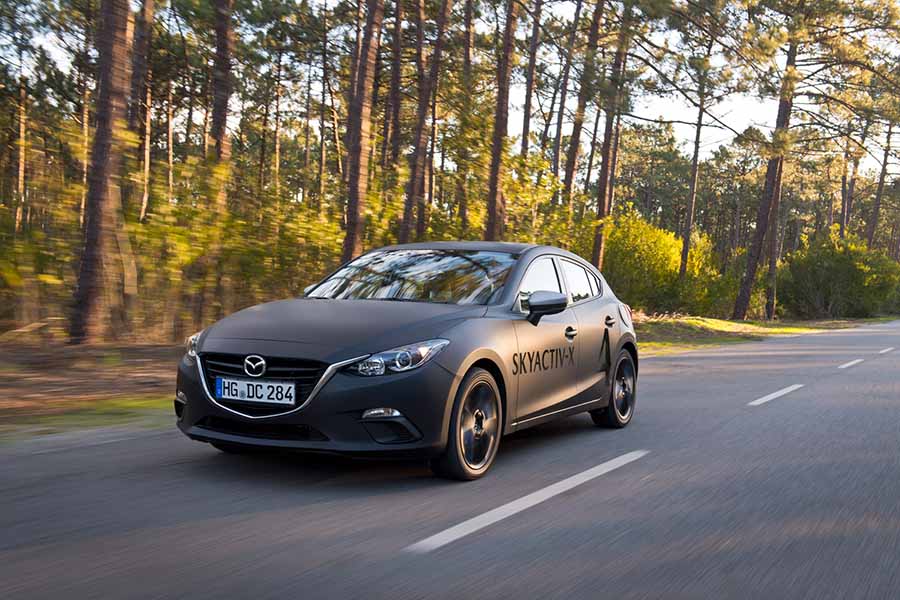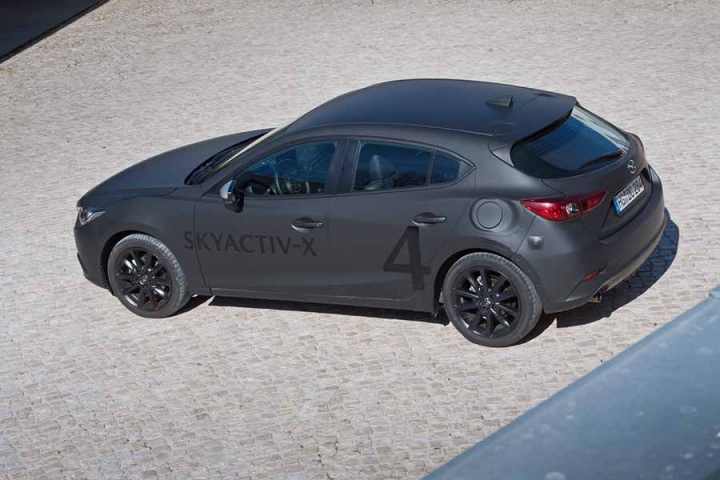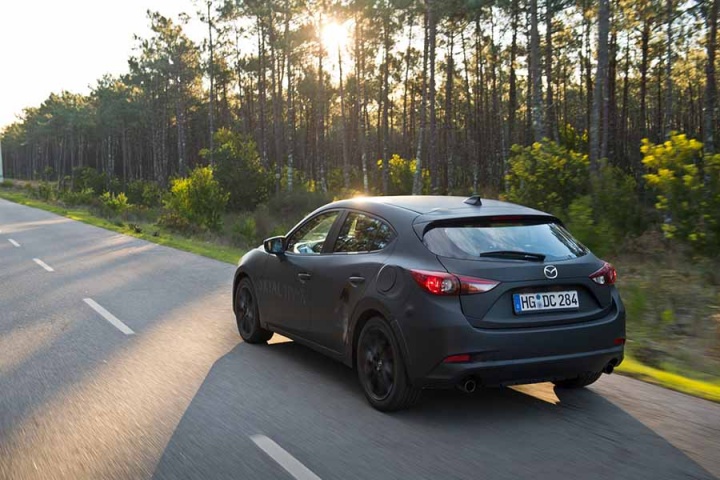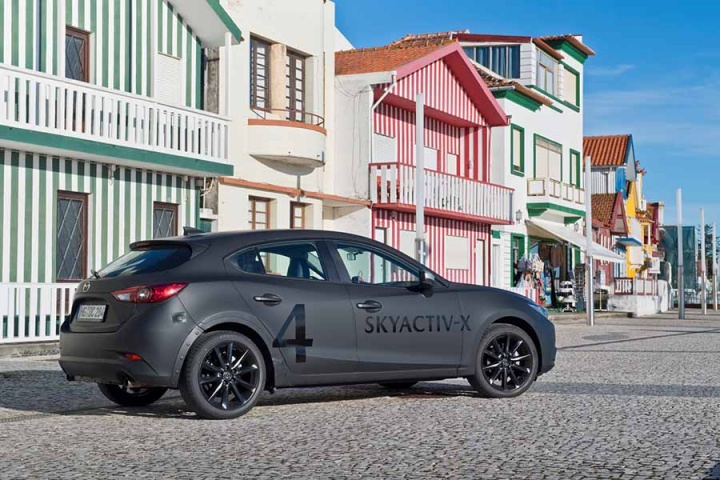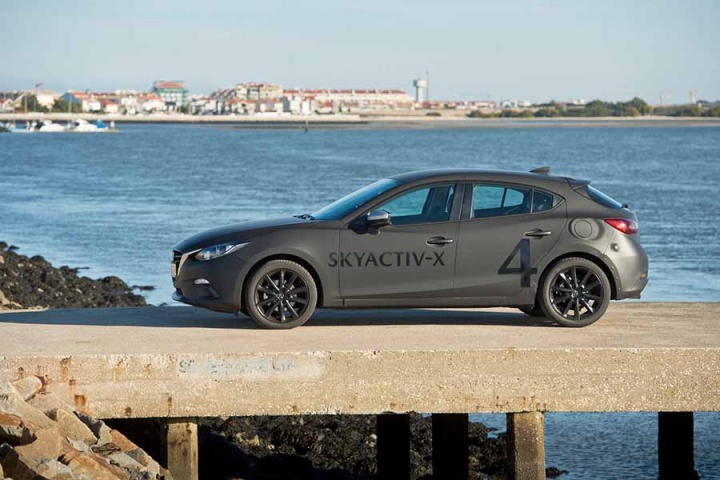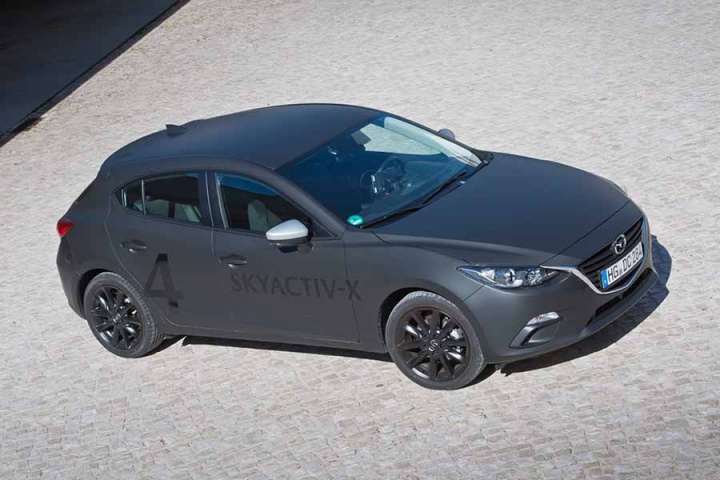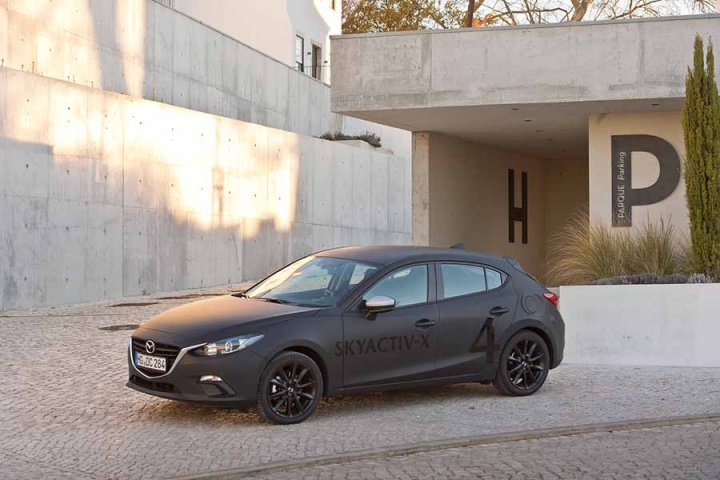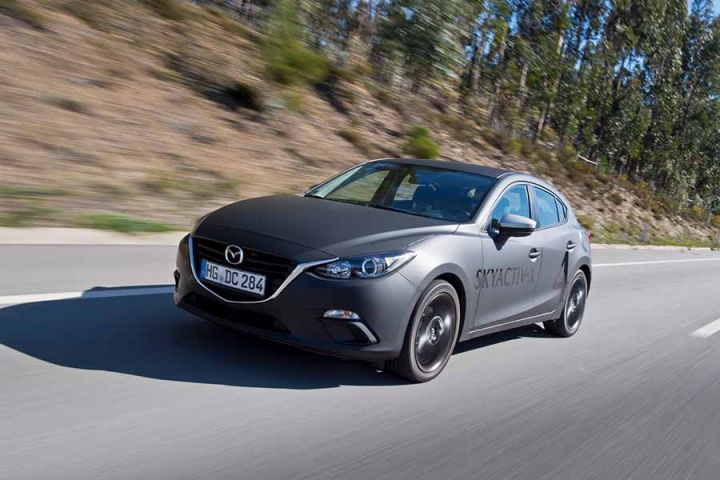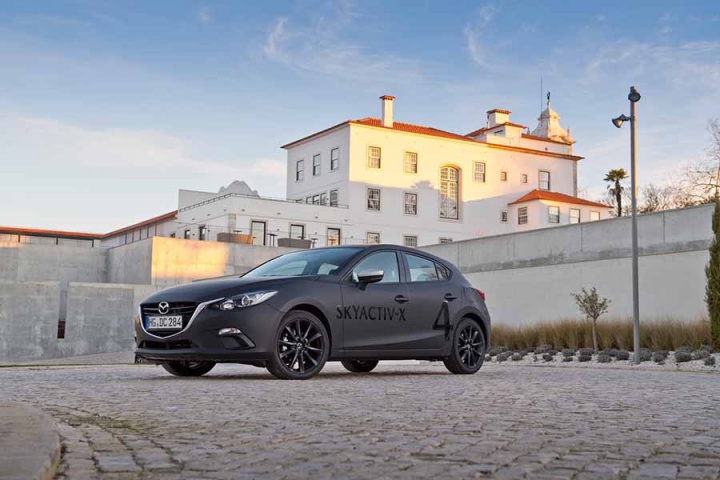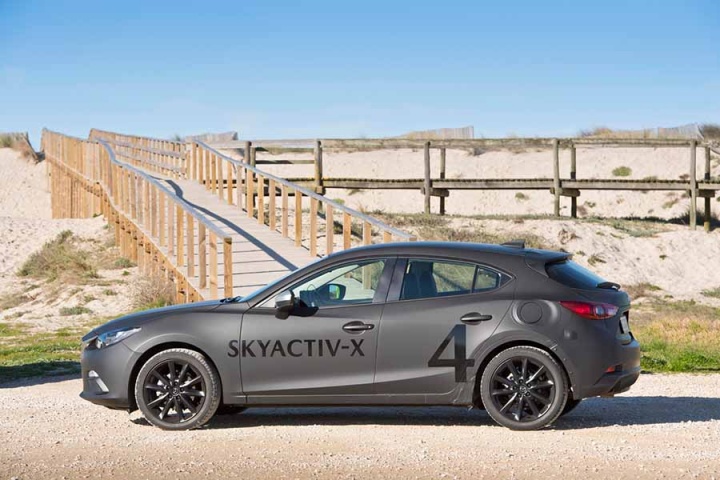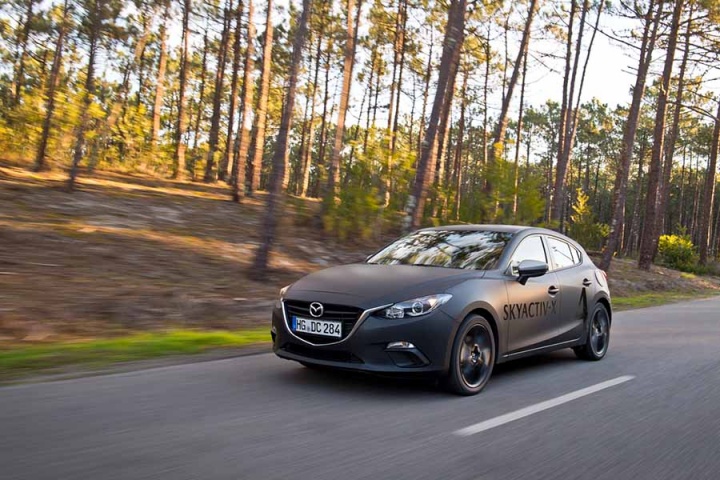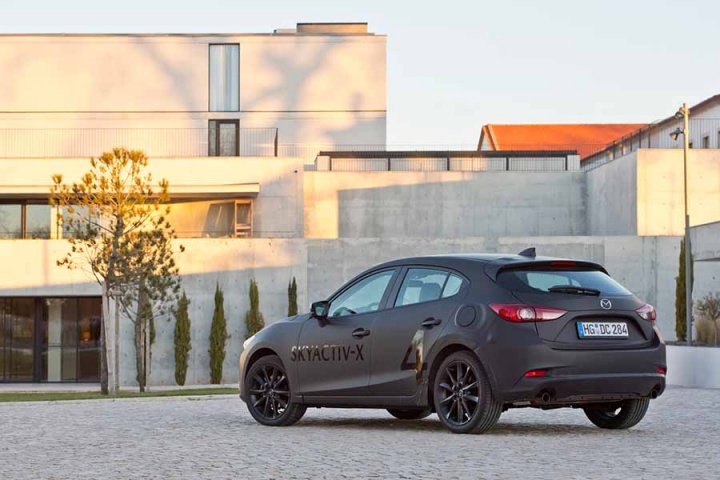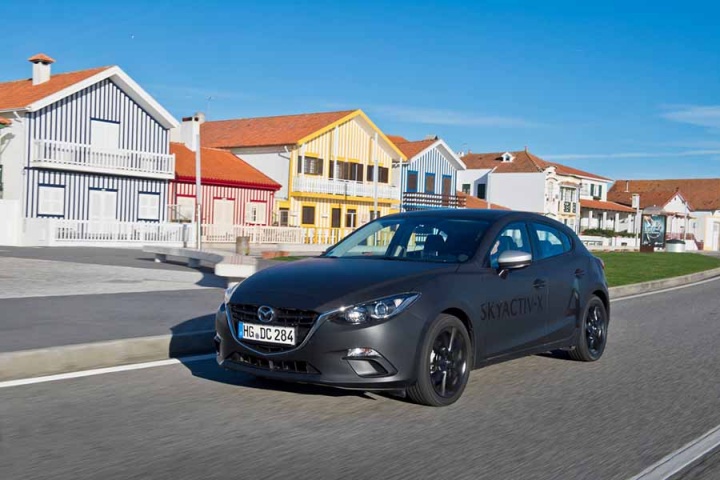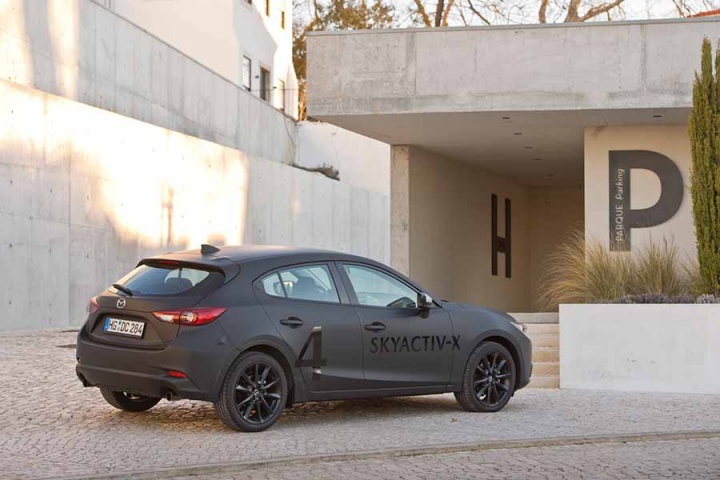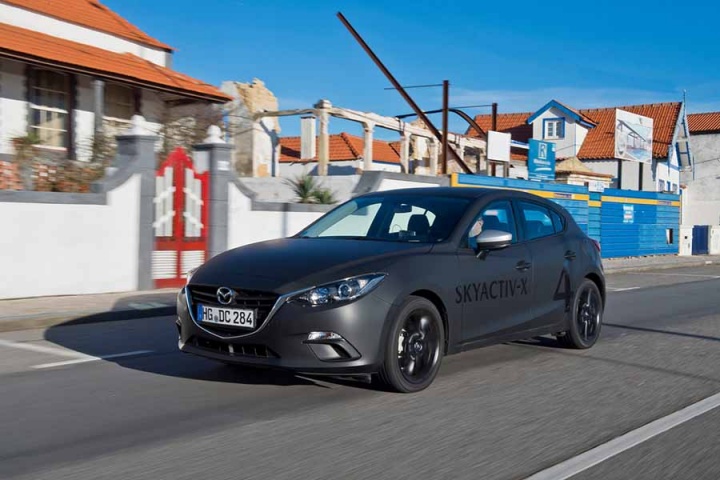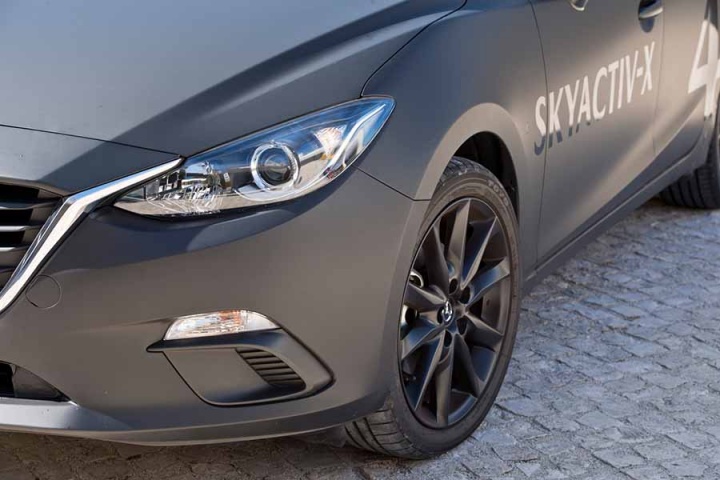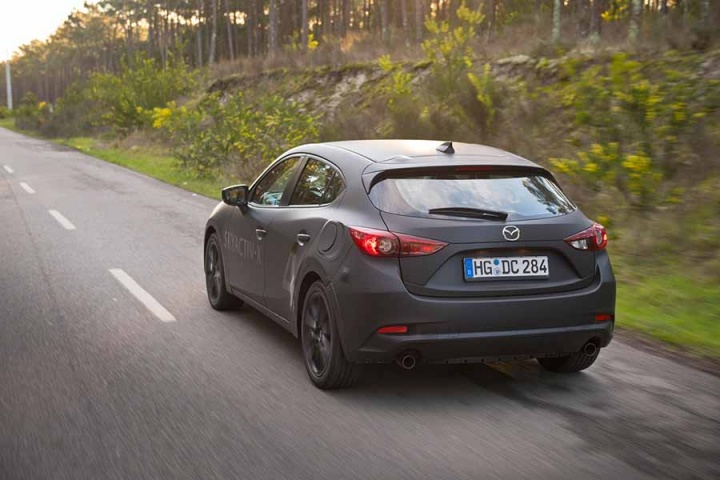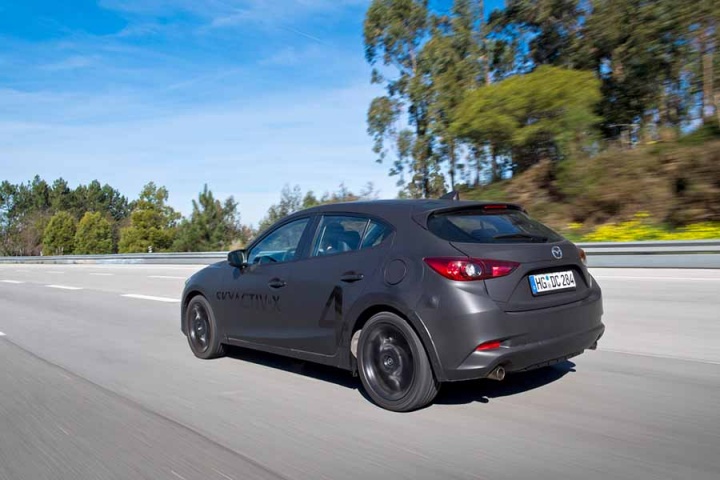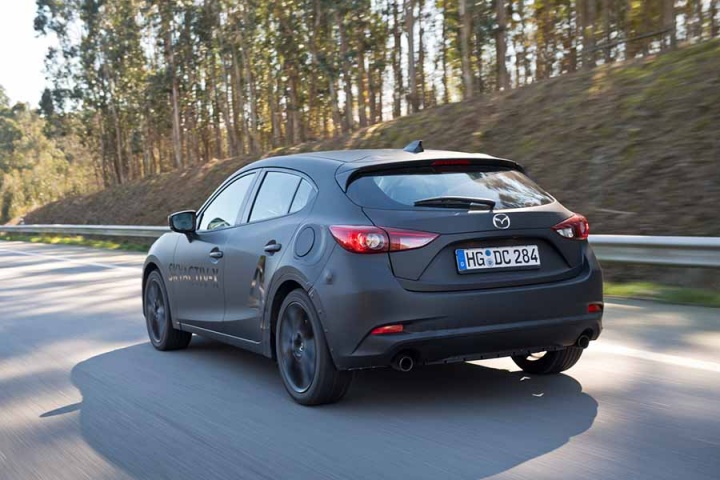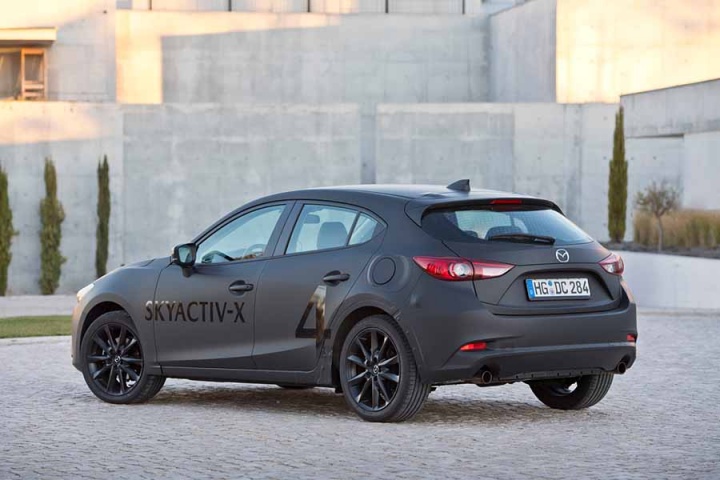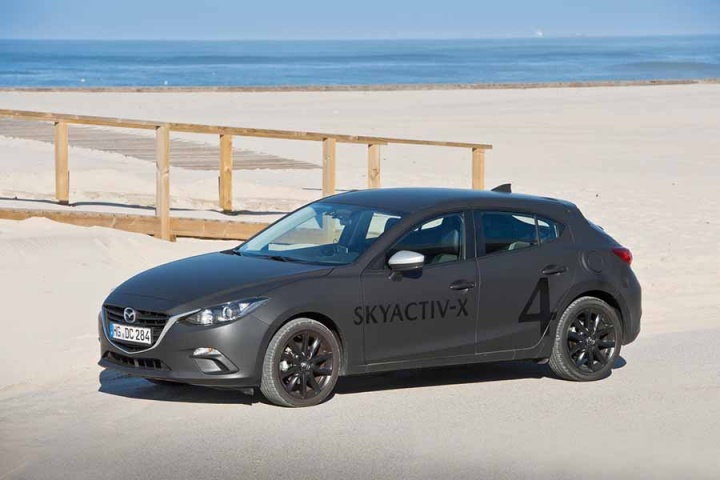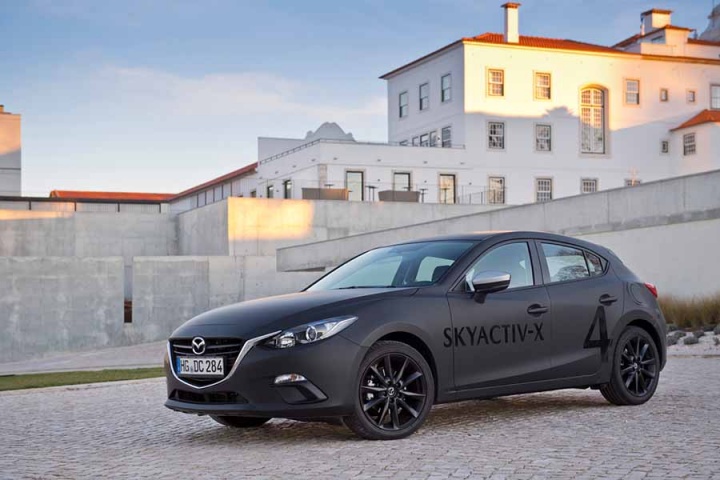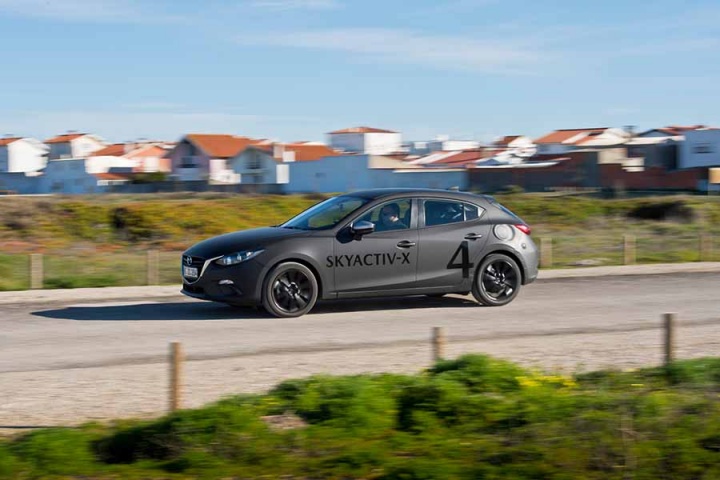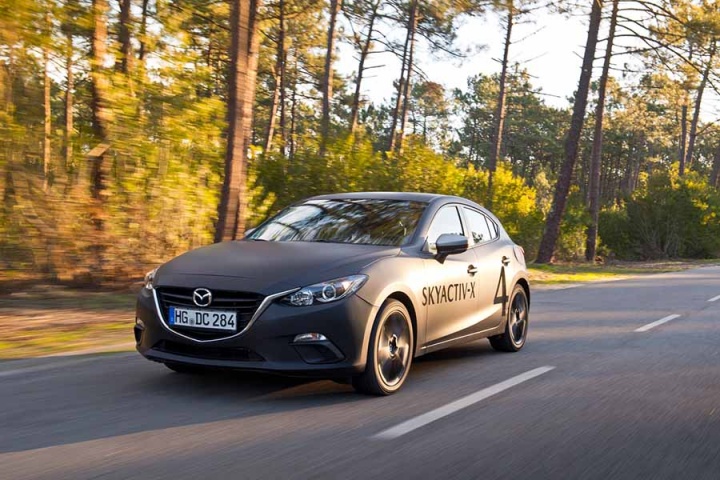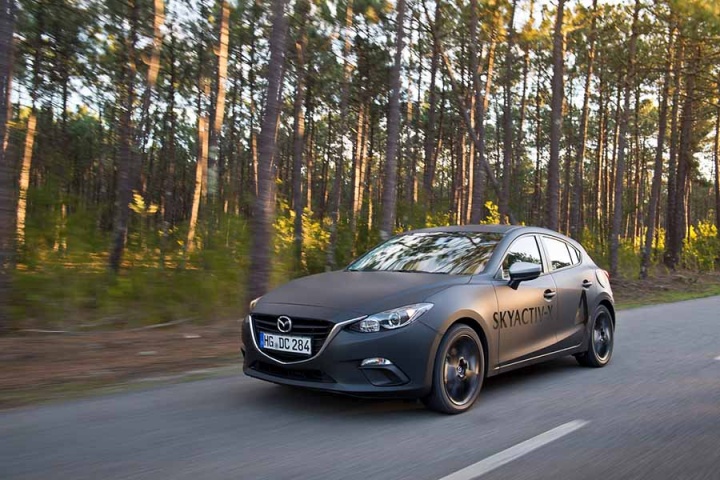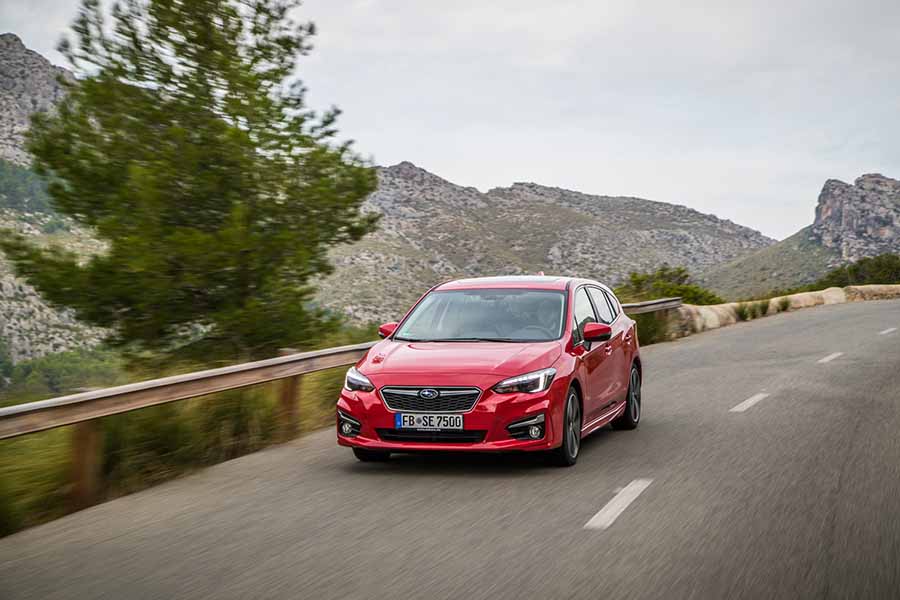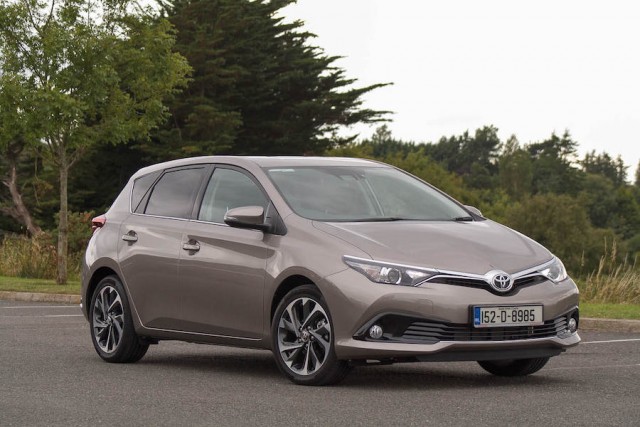Mazda believes that, if you measure the CO2 emissions of a car from well-to-wheel (i.e. you include the CO2 emitted during the entire construction process of a model from the raw materials stage to the finished article rolling off the production line), then the age of the electric vehicle (EV) is not quite as close as we think; for instance, the mining and transportation of rare elements for EV batteries is particularly carbon-intensive, while in many parts of the world there isn't a sustainable supply for the electric grids used for recharging EVs.
So, while EVs and hybrids are part of the brand's longer-term strategy in the 'Sustainable Zoom-Zoom 2030' vision, for now Mazda is concentrating on its 'quest to make the best internal combustion engine in the world' as an effort to show its ecological responsibility. Therefore, say hello to the SkyActiv-X petrol engine, which incorporates some learnings from diesel power to use as little fuel as possible during operation...
What are you driving?
A Mazda3 five-door with what looks like a fancy matte black body wrap and some funky side graphics. But this prosaic appearance hides two new pieces of technology for the Japanese brand, which are the SkyActiv-X petrol engine and the next-generation SkyActiv-Vehicle Architecture. To a degree, we're going to gloss over the architecture (which involves new spherical bushes and revised suspension arm geometry, an ergonomically improved seat, which supports your pelvis better and gives your spine a natural S-shape and reinforced 'hoops' around the body-in-white, all with the aim of improving the ride comfort and refinement levels of the company's cars) because, while it's all worthy stuff, the current Mazda range is hardly poor on the refinement front. This is just the brand subtly massaging what it already possesses in spades.
So that brings us onto SkyActiv-X. It is an SPCCI petrol unit, which stands for 'SPark Controlled Compression Ignition'. In simpler terms, Mazda has taken the existing lean-burn SkyActiv-G petrol unit, one of the most fuel-efficient normally aspirated petrol engines on sale, and made it 20 per cent less thirsty, by incorporating a form of combustion seen in diesel engines. Running a 16:1 compression ratio, which is even more than the high 14:1 on the SkyActiv-G, the SkyActiv-X works with extremely lean combustion. This is good, because it creates less nitrous oxide (the dreaded NOx tailpipe gas) and there's greater thermal efficiency in getting the engine to operating temperature, but on the converse side it can lead to engine knock - premature detonation of the air-fuel mixture ahead of a piston's 'top-dead centre' travel.
To counter this, the SkyActiv-X can run in compression ignition (CI) mode, which is how a diesel operates. It's still slightly different here, as the spark plug is always employed (diesel cars don't have spark plugs at all), whether the car is in full spark ignition (SI) mode during heavy engine loads or compression ignition on gentler running, but in essence the fuel-air mixture is pushed almost to the point it will self-combust by pressure alone, whereupon the spark plug introduces a small fireball to the proceedings. This ensures that the compression combustion of the fuel happens exactly when it is needed in the cylinder cycle, while it also makes sure that a chain reaction starts in the lean mixture, which otherwise might not happen without the spark plug.
All sound complicated? Well, it is, but it offers all the rev-happy response of a petrol engine with the parsimony of a diesel - and if it can return 20 per cent fuel efficiency gains in the Mazda SkyActiv petrol engine portfolio, without recourse to a turbocharger, then it's high-end engineering that's deserving of the highest praise. Furthermore, Mazda says it is quieter, smoother and generally more refined than the SkyActiv-G, while it should also be capable of kicking out 190hp and 230Nm (up on the existing 2.0-litre's numbers of 165hp and 210Nm) once the engine is fully homologated for production. As it is, the units we tested were at an early prototype stage and so all data, including precise economy and emissions figures, is yet to be confirmed.
Name its best bits
The new SkyActiv-X engine genuinely feels like a small capacity turbodiesel, or even a light-pressure petrol turbo model; it's that good and that noticeable. The extra muscle of the engine is apparent as soon as you slot into first gear and move off, and it translates into more fulsome mid-range performance out on the move - the reason we know this is that Mazda provided a regular Mazda3 with the existing 165hp SkyActiv-G engine as a direct back-to-back comparison. Like engines that feature cylinder deactivation, such as the 150hp version of the SEAT Leon 1.4 TSI, you will never determine the switch as the Mazda shifts from SI to CI running - we only knew it was happening because the prototypes had a screen mounted on the dash with three different shades of green circles shown on it. If only one was illuminated, the car was in SI mode, while two indicated it had shifted to CI combustion and three was the most efficient, lean-burning fuel usage of all, requiring only the barest minimum throttle inputs to have it glowing.
Better still was the refinement. Accepting that the final gearing is still to be agreed upon and that prototype cars rarely have the full breadth of sound-deadening and interior materials required to absorb unwanted noises, the SkyActiv-X was notably quieter at motorway speeds than the SkyActiv-G, it introduced less vibrations into the passenger compartment and up through the pedals/wheel when spinning to 6,000rpm and it just felt stronger in-gear. The redesigned ergonomic seats and the stiffer, newly-bushed chassis certainly bode well for the next-generation Mazda3 that will sit on this platform, too, so all the signs are there that there's plenty of life in the SkyActiv portfolio just yet... and that Mazda is right to keep developing internal combustion engines.
Oh, and fuel economy - we can only extrapolate from the SkyActiv-G's returns and Mazda's claims for the new motor, as the trip computer displays were taped over in the binnacle of the SkyActiv-X car. So, on a gentle motorway run in the SkyActiv-G while in convoy with two SkyActiv-X models going at the same speed, the production Mazda returned 7.0 litres/100km, or 40.4mpg. A 20 per cent increase on that would be 48.5mpg (5.8 litres/100km), which is an impressive uplift.
Anything that bugs you?
To be fair, at this moment, we'd have to say we have no annoyances with the car that we are 100 per cent convinced will make it through the remaining development processes, because Mazda is still finalising the gearing and hence the exact economy and emissions numbers. Obviously, the interior finishing on the prototypes was rudimentary and we couldn't make any direct, measurable comparisons on the performance or consumption, so at this stage we've got no complaints to make about the SkyActiv-X unit.
And why have you given it this rating?
We cannot yet rate a car that uses a developmental engine and chassis configuration, but we can say that an all-new Mazda3 built on these underpinnings would be competitive in the C-segment hatchback market. And as it's already one of our favourite cars in the sector, then that can surely only be very good news indeed.
I want to know more
If there is anything specific you'd like to know about the current-generation Mazda3 that we've not covered, feel free to send us a question via the Ask Us Anything page.

